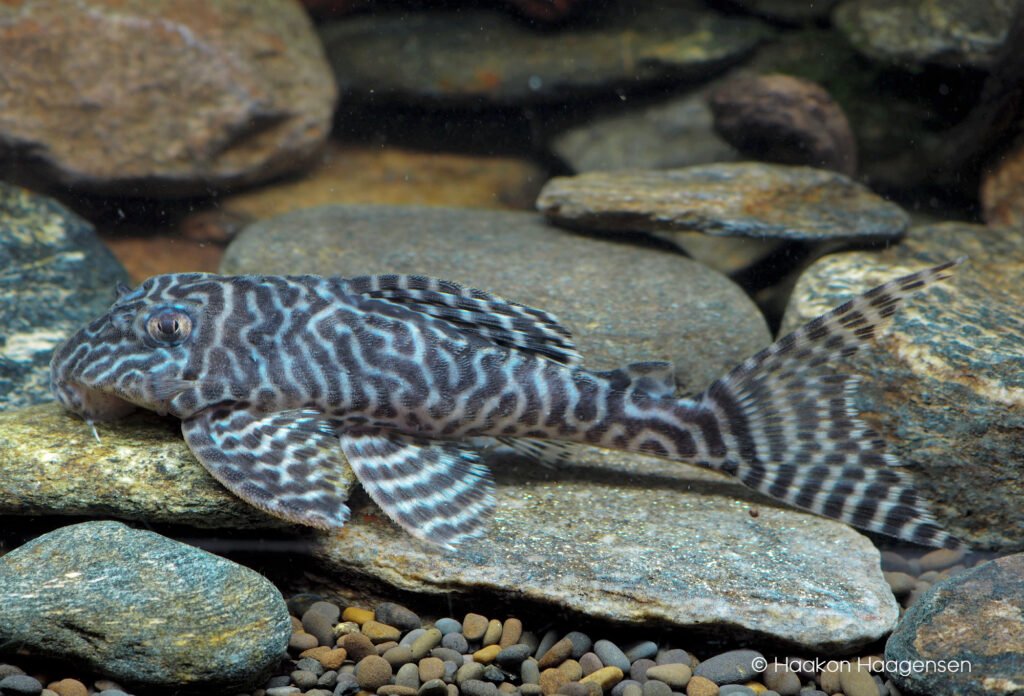
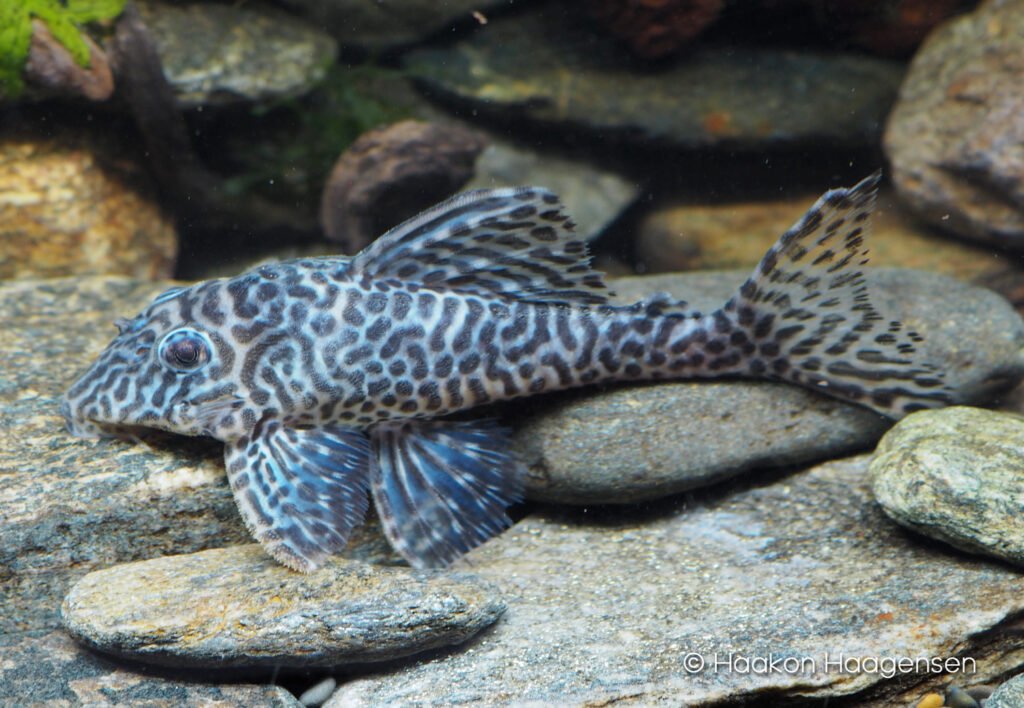
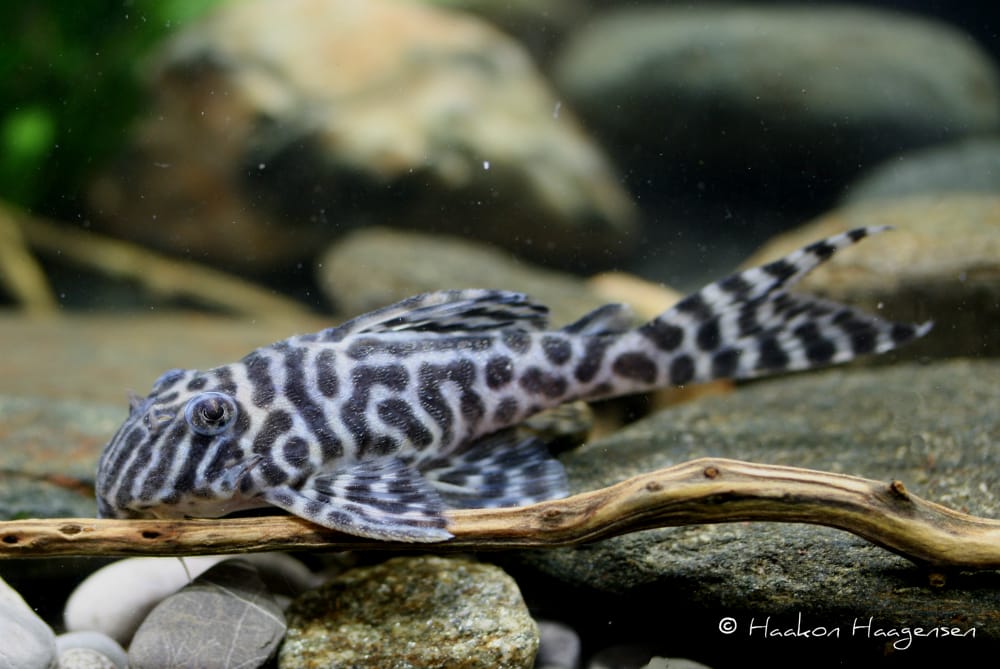
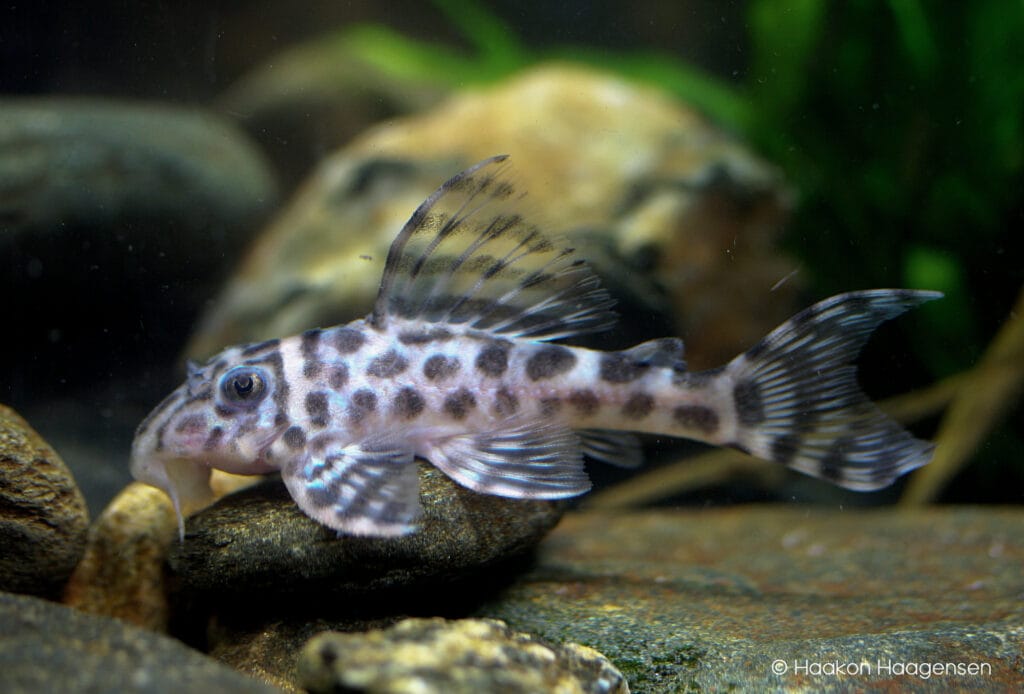
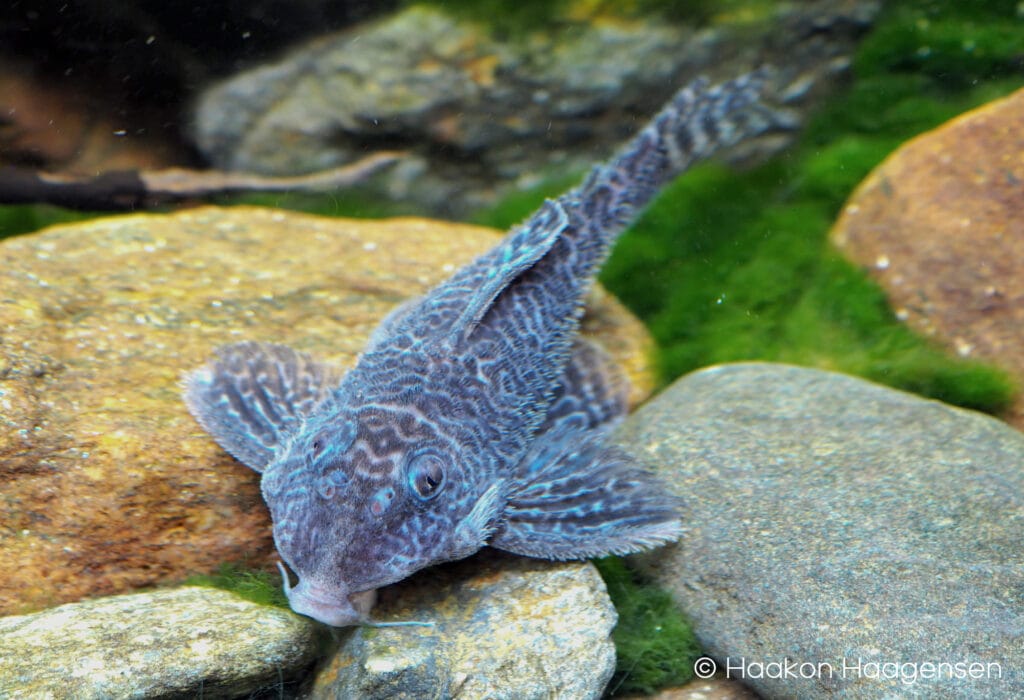
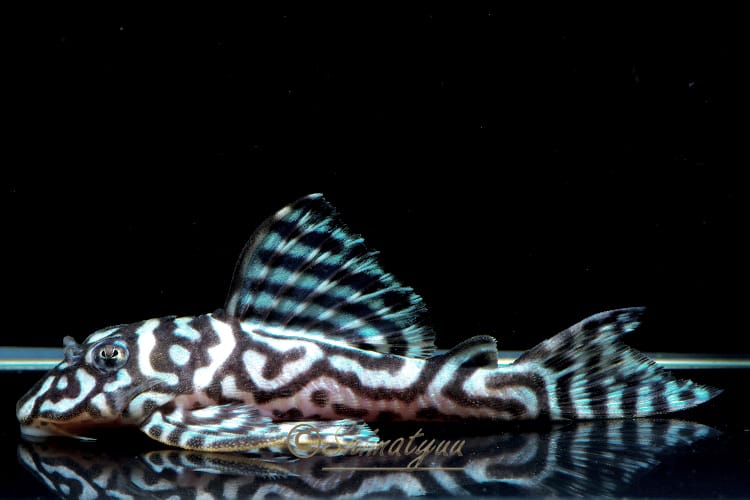
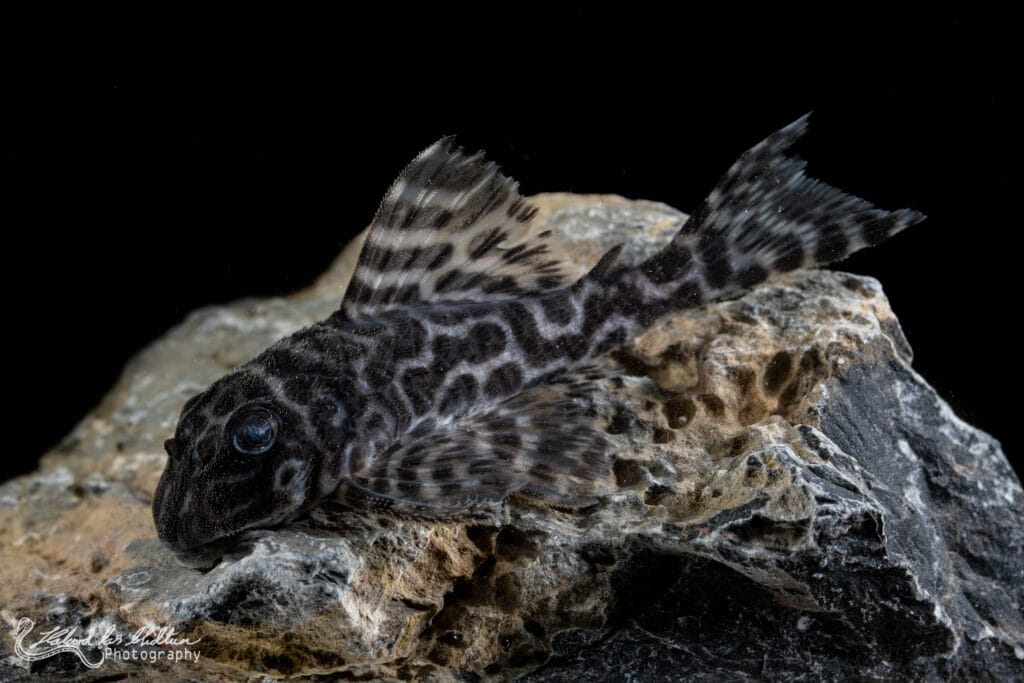
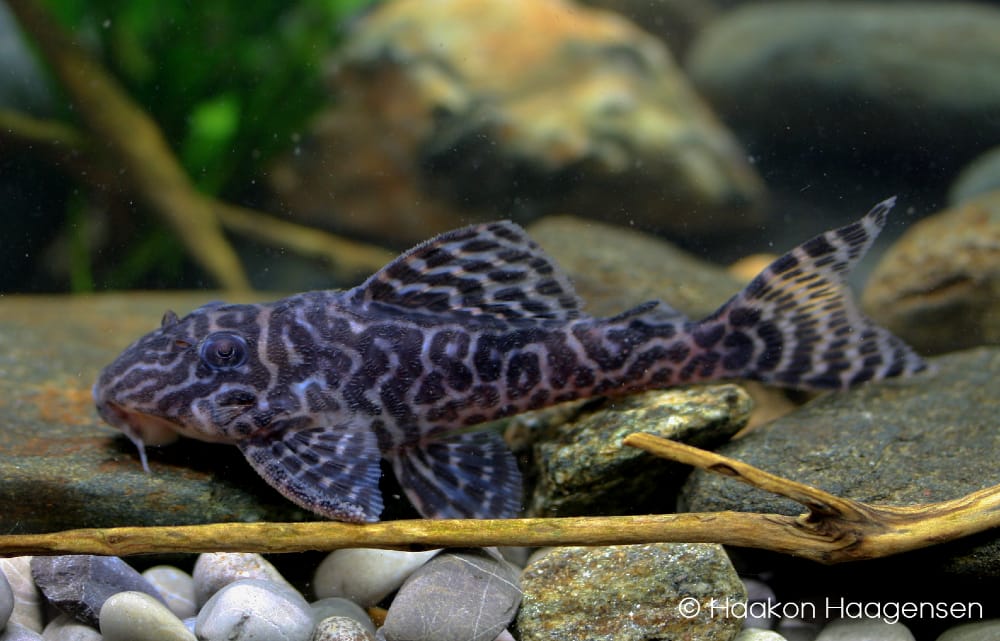
There has been a high level of uncertainty surrounding the proper identification of the wormlined Hypancistrus forms from Belo Monte, Rio Xingu, Brazil ever since they first entered the hobby. There appears to be some evolution in the making going on, with new forms slowly separating into new species, and these forms also prove to be highly variable when bred in captivity. L399 and L400 were initially presented as two separate forms from the same area, but it has later turned out to be very hard to separate these two L-numbers from each other due to the variability within both. They are among the most beautiful of all L-numbers with their black markings against a light body, and they are kept by numerous breeders worldwide. Because of their similarity to other Xingu-based forms, crossbreeding is a high risk. Currently, L399 and L400 are not allowed to be exported from Brazil, although L66 and L333 are. As they were all eventually described as one species in 2025, this might change. Until then, we must rely on captive bred stock to enjoy these deviant strains of the beautiful Xingu Hypancistrus in our aquariums.
Facts:
Name: Hypancistrus seideli (Sousa, Sousa, Ribeiro, Sabaj, Zuanon & Py-Daniel, 2025)
Trade names: L287, L399, L400
Origin: Rio Xingu, Brazil.
Maximum size: 12-14 cm / 5-6”
In the original presentation by Werner, L399 was defined as a slightly more elongate, bigger (12-14 cm) form than L400. Also, L399 is usually showing a pattern of stripes and short lines, not unlike L66, whereas L400 may often show a pattern of spots and blotches. Wild imports have since shown a huge variation where individuals overlap these traits in every way. They all represent the same species, which is even the same species as L66, L173 and L236. The differences in appearance are likely the result of local adaptations to certain variable conditions in the rapids and pools where these fish are found. Compared to L66, L399 has an even more elongate bodyshape, and the caudal fin is usually more forked too. L66 grows bigger. Compared to L174, the spotted varieties of L399 have bigger eyes, a more elongated body and a larger adult size. Even the so-called L236-pattern (less black) is found in certain individuals of these forms.
Although it’s difficult, one should always strive to keep separate lines (wild or bred) of L399/400 apart to avoid an unnecessary mix of them all in the future.
They need an aquarium set up consisting of lots of hiding places in the form of rocks, wood and of course specially made caves that suit their measurements. In these the males will eventually guard their offspring. They prefer water that is warm (27-30 C), soft and slightly acidic. Most of all it should be well oxygenated and clean, so a good filtration system and frequent water changes are essential. Among themselves they are peaceful, although males may quarrel for caves and females can sometimes be badly injured or even killed during the breeding-trapping in the male’s cave. Males develop longer odontodes on their pectoral fins and on their cheeks and have broader heads. Hypancistrus are mostly carnivorous, so a selection of crustaceans, insect larvae and fish meat should be offered along with high quality dried foods that also contain some vegetable matter.
More info:
